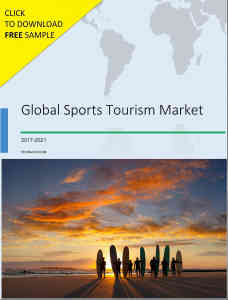In 2018, sports tourism is set to emerge as a massively lucrative component of the global tourism market. And, where there is money, there will be competition. Vendors who are looking to consolidate their standing in the global sports tourism market will benefit from the following trends. These top-5 market trends will realign sports tourism to sync with the modern customer’s sensibilities and demands.
 1) Hybrid events gain popularity
1) Hybrid events gain popularity
Combining other specialty fixtures with the core sporting event accomplishes two objectives:
a) Attracts a wider demographic that may or may not be interested in the sporting events.
b) Offers core sports tourists more engagement value and improves loyalty.
For organizers, the benchmark will be the commonalities pertaining to production and promotional requirements. Combining an event that naturally jells with a sport will bring in new audiences. Also, boost local businesses and importantly, enlist a new segment of advertisers.
2) Sports tourism market invites new events
2018 might prove to be year of the sports tourism entrepreneur. The high profitability associated with the global sports tourism market will encourage the creation of new sporting events. Planning and execution of a unique sporting event, when strategized as a community, can be used effectively as part of a regional development strategy.
It isn’t entirely necessary that these self-made events comply with an existing and popular sport, either. In 2018, different parts of America will host such sporting events as bouldering, roller derby, pickleball and (wait for it) Quidditch!
3) Emergence of e-sports and infusion of technology
The primary USP of e-sports is that it is already high technology. E-sporting events piggyback off the immense popularity of online gaming and bring together acclaimed online gamers in an offline setting. Therefore, there is an affinity here, arising from the growing popularity of gaming (esp, with the millennials) and the target audiences’ (again, the millennials predominantly) natural inclination towards technology driven solutions.
XPO Game Festival, last hosted in Tulsa, Oklahoma in October 2017, perfectly summarizes the lure of sports tourism that attracts a large demographic and is rather unconventional. According to market experts, in 2018 e-sports will emerge as the most lucrative component of the global sports tourism market.
4) Social media integration leads to bigger audiences
With the advent of live videos on such social media platforms as Facebook and Instagram, organizers are afforded a far-reaching promotional option with minimal investment. Obviously, this changes the game tremendously as the focus will now shift from media and promotional hubs to social media resources.
Today, mobile internet is a powerful enabler of events that may otherwise not find an audience easily. Consequently, proponents of the sports tourism market will lean heavily on social media to get the word out in 2018.
5) The evolution of sponsorship in sports
Gone are the days when the relationship between a sponsor and the sport was limited to customized team apparel and on-the-field signposts and hoardings. Today, sponsors want to play a bigger role as part of their investment. And, they want to affect this by gaining more proactive visibility on and off the playing arena.
In 2018, the onus will lie in creating compelling storylines that highlight the sponsor’s involvement with the sport. This story needs to be strategically promoted through visual content that fans can share and comment upon. Consequently, the sponsors will move away from the larger picture and feature in grassroot discussions. As a result, pulling in hardcore fans and new recruits alike and rendering them an indispensable part of the experience.
Additionally, our analysts have identified the following as enablers of the global sports tourism market, between 2017-2021:
# Star power will continue to sway opinions
Where sporting events are concerned, the players are poised as the bridge between the sponsor’s sales pitch and the audience. In 2018, star power will still hold the most potential when sponsors are looking to connect with an existing or prospective customer base. However, aside from just the visual media, popular sport stars will likely make a bigger impact with their social media accounts. Already, players such as Maria Sharapova, Roger Federer and Virat Kohli are major influencers on Twitter, Instagram and Facebook.
# Communities built around sporting events
The growing influence of the sports tourism market will ensure that communities upgrade, expand and expansively monetize their existing sporting facilities. As a result, communities will utilize tourism-related taxes (lodging, food and beverages, etc.) to build and upgrade sports venues that feed into the sports tourism movement. Consequently, heavy infrastructural customizations at the city level will accommodate the growing interest that their local sporting event is likely to generate on the national and international stages.
# Volunteers or employees?
The use of volunteers will undergo a major change in protocol in 2018, stemming from the case of Liebesman v. Competitor Group, Inc., wherein clear definition for the role of a volunteer was sought in terms of the job description and remuneration. The judgment in this case is deferred for early 2018 and the fallout from this ruling will redefine how event organizers identify, recruit, employ and possibly compensate such ‘volunteers.’
# Big Data lays the groundwork for future iterations
Digitalization is already a key factor in most globally popular sporting events. Eventually, the influence of technology will trickle down to lesser-known events and allow them the opportunity to better analyze available data. As a convergence point of consumer interests, sponsorship agendas and sports associations, sporting events put forth masses of associated data. With the latest technology, event organizers can sift through big data and find favorable patterns that can affect future profitability.
# Customized packaging ensures a bigger target audience
Going forward, the sports tourism market will lean squarely on the broad shoulders of the global travel industry. Furthermore, event organizers will heavily customize their ticket offerings to include audiences that may not necessarily be into sports. For instance, selling a select sporting event like Alaska’s annual ‘Iditarod Trail Sled Dog Race’ to a fan would be considerably easy. However, the fan’s spouse and family can also be pulled in by highlighting the various attractions in Alaska and customizing tour packages that are more about fun than just about the sport.
Eventually, it will be more than just about the sporting event. The global sports tourism market raked in a commendable USD 7.68 billion in 2017, and the stakes and rewards appear that much higher in 2018. As a result, expect the sports tourism market to command more attention from fans and sponsors alike.
For more information on this market, see the infographic below or check out our report.

.



